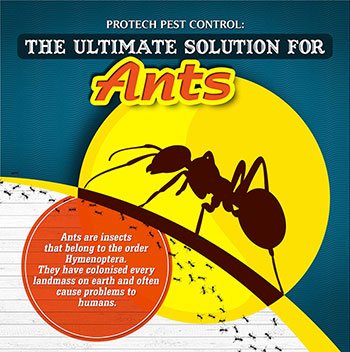An Introducing Technique On The Cutting Side Of Bug Control Developments Is Positioned To Change The Way Pest Control Strategies Are Carried Out, Extending Beyond The Existing Perspective
An Introducing Technique On The Cutting Side Of Bug Control Developments Is Positioned To Change The Way Pest Control Strategies Are Carried Out, Extending Beyond The Existing Perspective
Blog Article
Write-Up Writer-Chan Schultz
As you browse the world of parasite control developments, you'll locate a landscape transformed by sophisticated innovations and techniques. From innovative tracking systems that provide real-time understandings into bug behaviors to eco-friendly therapies that focus on sustainability, the area is evolving rapidly. However what lies past these advancements? What new frontiers are being checked out to resolve insect difficulties more effectively? The answer may surprise you.
Advanced Checking Equipments
When checking parasites, using innovative systems can dramatically improve efficiency. By utilizing innovative technologies such as automated sensors and remote surveillance gadgets, you can gather real-time data on pest task degrees and patterns. These systems can help you pinpoint issue areas much more accurately, enabling targeted intervention techniques that are both reliable and resource-efficient.
One vital advantage of innovative monitoring systems is their ability to give early discovery of parasite problems. By immediately recognizing indicators of bug presence, you can take swift action to prevent the issue from escalating, saving you time and money in the future. Additionally, these systems can offer insights into the source of bug troubles, allowing you to deal with underlying problems and execute proactive procedures to decrease the danger of future infestations.
Including innovative monitoring systems right into your pest control practices can enhance your procedures and improve total performance. With real-time information and targeted remedies at your disposal, you can stay ahead of parasite concerns and maintain a pest-free atmosphere with higher simplicity.
Eco-Friendly Treatments
Using eco-friendly therapies in parasite control methods can dramatically reduce environmental impact while effectively handling pest populations. These therapies prioritize natural services over rough chemicals, making them safer for both the atmosphere and the people exposed to them. Environment-friendly pest control methods usually involve making use of organic oils, microbial pesticides, pheromones, or catches to target particular insects without harming beneficial pests or pets in the ecological community.
One prominent environmentally friendly therapy is diatomaceous planet, an all-natural powder that successfully controls insects like ants, roaches, and bed insects by dehydrating them. Another eco-friendly option is neem oil, stemmed from the neem tree, which works as an all-natural bug spray and disrupts the development and reproduction of parasites. These treatments not just provide effective parasite control but additionally add to lasting bug monitoring by decreasing the negative influence on the setting.
Lasting Parasite Management
To achieve sustainable insect monitoring, prioritize techniques that reduce environmental injury while efficiently managing parasite populations. Applying integrated pest management (IPM) techniques is key to achieving this equilibrium.
Begin by analyzing the pest problem and determining the insect species existing. Make use of non-chemical control approaches such as sealing entrance points, eliminating food and water resources, and maintaining correct hygiene. When chemical treatments are needed, go with low-toxicity chemicals and apply them with precision to minimize off-target effects.
Urge natural pest killers like ladybugs, lacewings, or birds to help manage pest populaces. Use pheromone traps or insect development regulators to interrupt breeding cycles and decrease pest numbers. Consistently monitor pest activity to catch invasions early and avoid them from spreading. Implementing cultural methods like plant rotation and choosing pest-resistant plant ranges can additionally help reduce the requirement for chemical treatments.
Conclusion
As you navigate through the ever-evolving landscape of parasite control technologies, keep in mind that each improvement resembles a sign of light assisting you in the direction of a greener, more sustainable future. Accept the power of modern technology and environment-friendly treatments to shield your home and the atmosphere.
Allow https://www.latimes.com/home/la-hm-living-with-wildlife-20141004-story.html between nature and science motivate you to dominate any type of pest difficulty with confidence and grace. Maintain moving on, equipped with the latest modern technologies and strategies in your arsenal.
